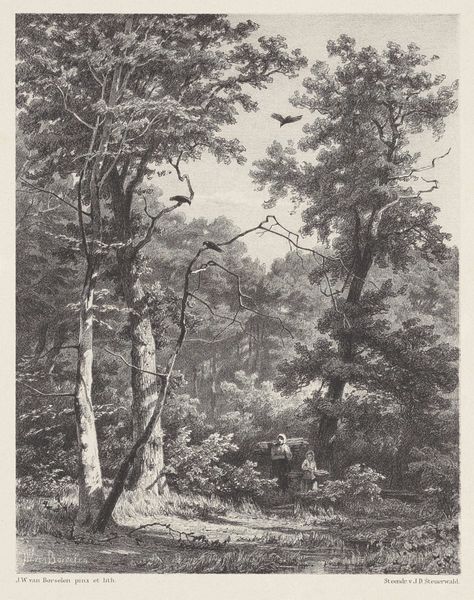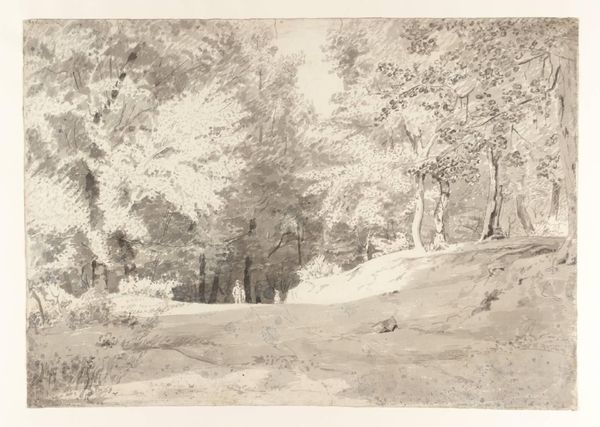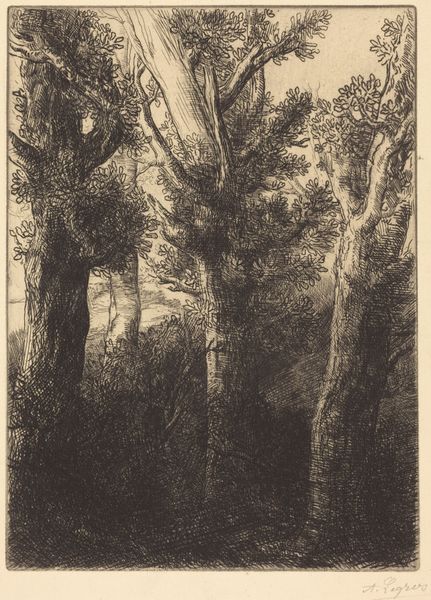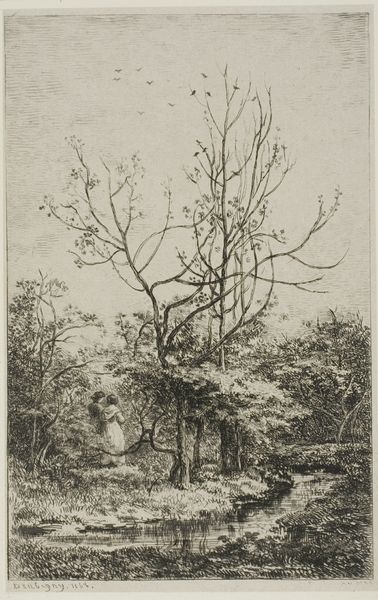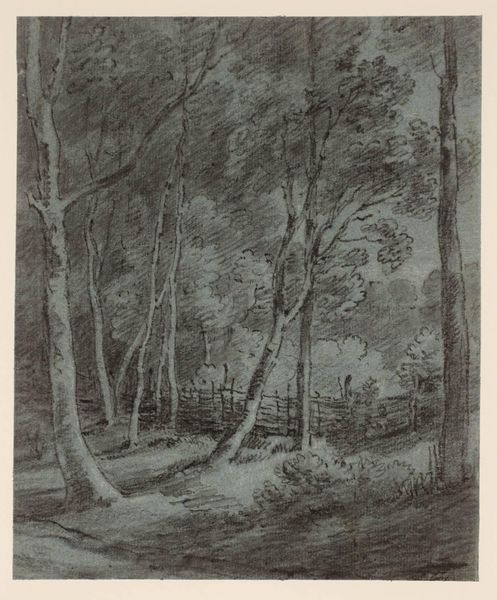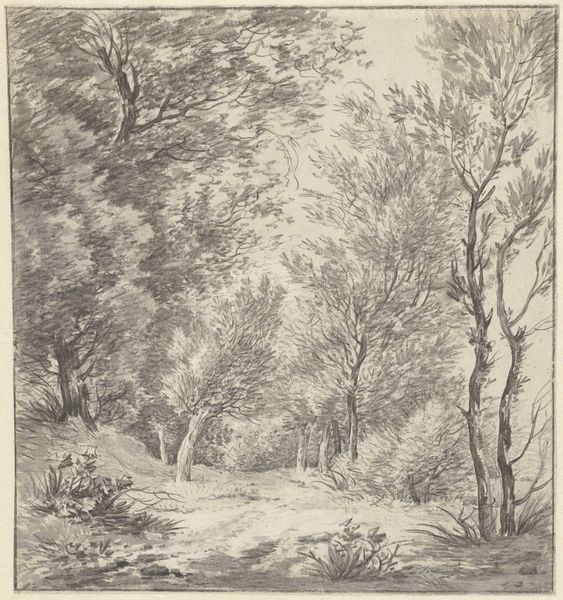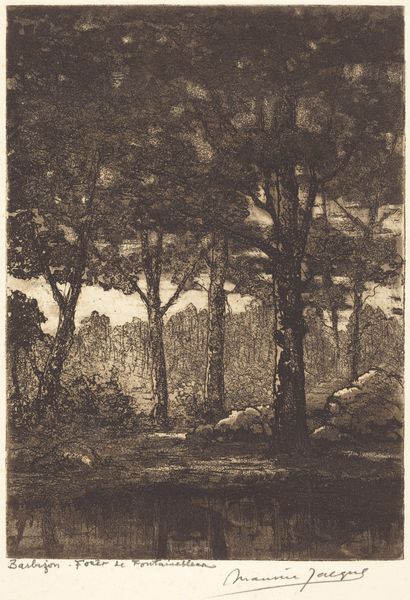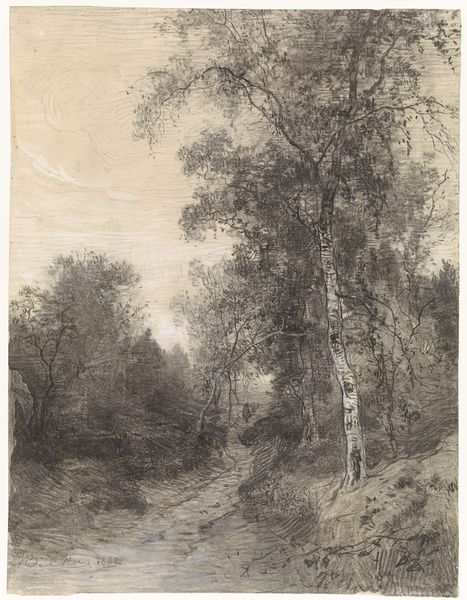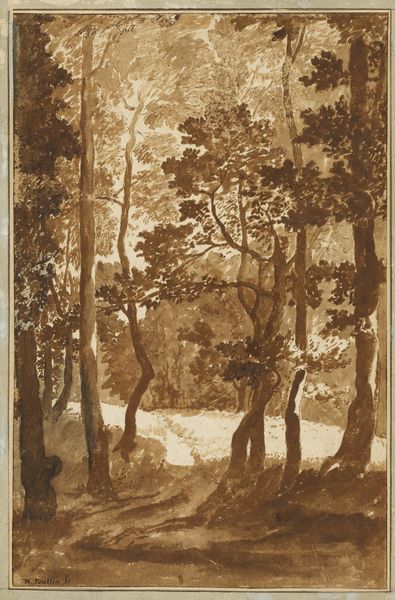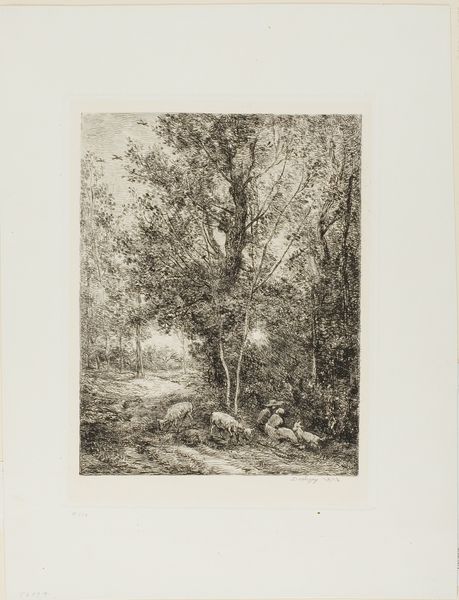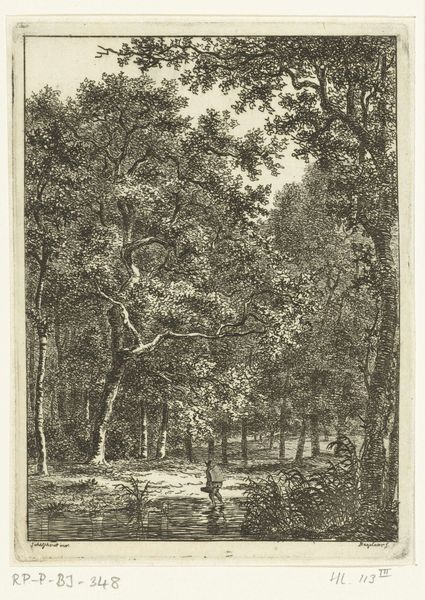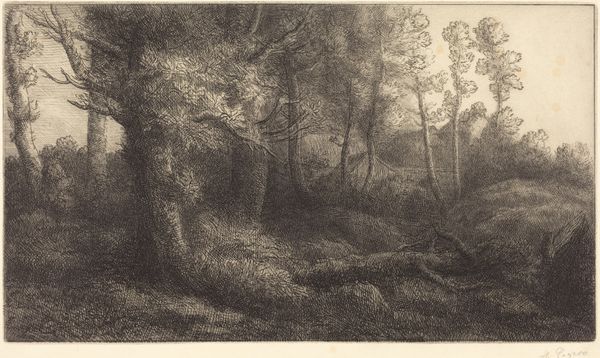
Dimensions: overall: 20.6 x 16.4 cm (8 1/8 x 6 7/16 in.)
Copyright: National Gallery of Art: CC0 1.0
Karl Theodor Reiffenstein rendered "A Copse of Trees" in 1863, a drawing filled with symbols of nature’s cycle. The forest, a space of mystery and transformation, is dominated by trees whose exposed roots speak to the interconnectedness of life above and below. Consider the fallen tree trunk. We see it echoed across time, from ancient Roman sarcophagi, where it symbolized mortality, to vanitas paintings of the Dutch Golden Age. But here, it also hints at renewal. The forest floor becomes a stage for the eternal play of death and rebirth. The exposed roots, those reaching tendrils, remind us of the deep, often unseen connections between the conscious and the unconscious, echoing the psychoanalytic concept of the roots of our behaviors. The image engages us on a primeval level, stirring emotions tied to our own mortality and the promise of regeneration. It speaks to a cultural memory. This motif, of decay leading to new growth, reflects a non-linear progression. It reappears, transformed yet familiar, in art across history. This evolution speaks to the enduring power of symbols to reflect our deepest anxieties and hopes.
Comments
No comments
Be the first to comment and join the conversation on the ultimate creative platform.
